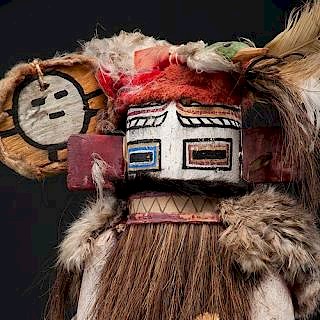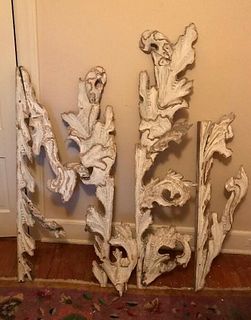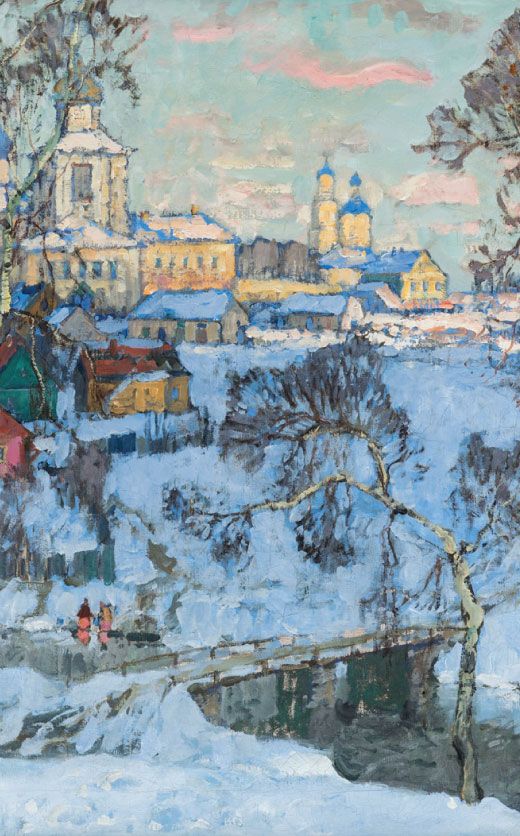Navajo Turquoise Cluster Concha Belt from Asa Glascock Trading Post, Gallup, NM
About Seller
6270 Este Ave.
Cincinnati , OH 45232
United States
With offices in Cincinnati, Cleveland and Denver, Cowan’s holds over 40 auctions each year, with annual sales exceeding $16M. We reach buyers around the globe, and take pride in our reputation for integrity, customer service and great results. A full-service house, Cowan’s Auctions specializes in Am...Read more
Two ways to bid:
- Leave a max absentee bid and the platform will bid on your behalf up to your maximum bid during the live auction.
- Bid live during the auction and your bids will be submitted real-time to the auctioneer.
Bid Increments
| Price | Bid Increment |
|---|---|
| $0 | $25 |
| $500 | $50 |
| $1,000 | $100 |
| $2,000 | $250 |
| $5,000 | $500 |
| $10,000 | $1,000 |
| $20,000 | $2,500 |
| $50,000 | $5,000 |
| $100,000 | $10,000 |
About Auction
Apr 10, 2015 - Apr 11, 2015
Cowan's Auctions dawnie@cowans.com
- Lot Description
belt with seven conchas and eight butterflies that match the buckle, concha length 2.6 in. x belt length 29 in. Buckle inscribed Ethel Chee Arviso / George Chee Arviso and dated 1948; each concha and butterfly inscribed with a number. Wright in his 1989 book lists several members of the Arviso family, but does not list either Ethel or Chee.
second quarter 20th century
Asa Glascock Trading Post
Asa Glascock (1898-1965), a native of Ralls County, Missouri, owned and operated a successful trading post located on North Third Street in Gallup, New Mexico from 1922 to 1957. He and his wife also managed a post in Gatlinburg, Tennessee, for several years during the mid-1950s.
Prior to becoming a trader, Glascock volunteered for the sheriff, serving as a member of the Gallup town posse when necessary and worked for the trans-continental railway. During his time with the rail, which ran through the middle of town, Glascock severely injured his right hand. This prompted his career change and became a trader who spoke fluent Navajo.
Asa’s wife, Margaret Smith Glascock (1924-2002), assisted him with the day-to-day activities typical of any thriving store—ordering supplies, showing merchandise, taking jewelry for pawn, operating the cash register, and keeping financial records.
The post sold Navajo blankets, Pendleton blankets, pawn jewelry, glass beads, groceries, and household goods similar to those found in today’s small hardware stores. One original item however, surpassed all others: the beaded leather belts. The Glascocks sold the profitable belts to the National Park Service, as well as to dealers across the country.
The post had a long counter off to the side, where Czechoslovakian glass beads were sold. The Zuni purchased the colorful beads by the “whiskey shot glass” and hurried home to loom-bead vibrant strips in the requisite length. When finished, the beaders returned the strips to the post where Margaret, using her Singer, stitched the strips to commercially made leather belts. Her sons often helped her with the final phase of lacing white plastic around the edges. The belt orders dwindled when the Japanese began imitating the belts.
Glascock sold his post in 1957 and the family returned to a farm in Missouri where they, like the Navajo, kept a herd of sheep. (David Williamson to Meyn, February 16, 2015, and Mary Tate Engels, ed., Tales from Wide Ruins, 1996: 192)
Provenance: Descended in the family; From Asa Glascock (1898-1965) Trading Post, Gallup, New MexicoWith expected wear.Condition
Condition requests can be obtained via email (danica@cowans.com) or by telephone (513-871-1670). Any condition statement given, as a courtesy to a client, is only an opinion and should not be treated as a statement of fact. Cowan's Auctions shall have no responsibility for any error or omission. - Shipping Info
-
SHIPPING. At the request of the buyer, Cowan's will authorize the shipment of purchased items. Shipments usually occur within two weeks after payment has been received. Shipment is generally made via UPS Ground service. Unless buyer gives special instructions, the shipping method shall be at the sole discretion of Cowan's Auctions, Inc.. Cowan's is in no way responsible for the acts or omissions of independent handlers, packers or shippers of purchased items or for any loss, damage or delay from the packing or shipping of any property.
-
- Buyer's Premium



 EUR
EUR CAD
CAD AUD
AUD GBP
GBP MXN
MXN HKD
HKD CNY
CNY MYR
MYR SEK
SEK SGD
SGD CHF
CHF THB
THB















